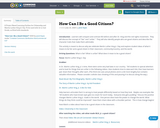
This is a lesson plan to celebrate the life of Marting Luther King Jr. and apply his concept of citizenship to the student's own life.
- Subject:
- English Language Arts
- Social Science
- Material Type:
- Lesson
- Author:
- Janel Keyes
- Date Added:
- 08/04/2020

This is a lesson plan to celebrate the life of Marting Luther King Jr. and apply his concept of citizenship to the student's own life.
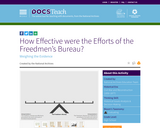
Students will analyze documents from the War Department’s Bureau of Refugees, Freedmen, and Abandoned Lands — better known as the Freedmen’s Bureau — that Congress established on March 3, 1865, as the Civil War was coming to an end. Using the scale in Weighing the Evidence, students will evaluate the effectiveness of the Freedmen’s Bureau in assisting formerly enslaved persons. Learning Objectives: Students will be able to identify and draw conclusions about the roles of the Freedmen’s Bureau (Bureau of Refugees, Freedmen, and Abandoned Lands), critically analyze primary sources, formulate opinions about the effectiveness of the Bureau, and back up their opinions verbally or in writing.
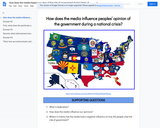
How does the media influence peoples’ opinion of the government during a national crisis? Students will read several articles on a current (or historical) national crisis and write an argumentative essay analyzing how the media influences the opinion of the people toward the government during a national crisis using relevant evidence from both current and historical resources.
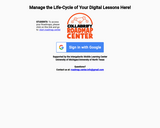
Using abstract nouns

Amy Guglielmo, Jacqueline Tourville, and Giselle Potter tell the story of autism advocate Dr. Temple Grandin’s childhood and her quest to experience the sensation of a hug. The resource includes a lesson plan/book card, a design challenge, and copy of a design thinking journal that provide guidance on using the book to inspire students' curiosity for design thinking. Maker Challenge: Students will work to develop an assistive technology solution for people with autism. Alternatively, students may develop assistive technology solutions for students with differing abilities. Students are encouraged to work with peers in a local special education classroom to combine their love of technology and engineering to help positively influence their peers’ lives.
A document is included in the resources folder that lists the complete standards-alignment for this book activity.
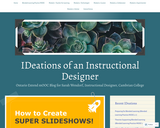
A colourful and fun superhero-themed slideshow presentation designed to teach students how to create effective slideshow presentations. A Google slides presentation that you can adopt / adapt for your classroom. Best suited for grades 5-8 but may work in higher grades too.
Outlines 7 tips for effective slideshow presentations:
1. Fantastic Fonts
2. Stupendous Size
3. Terrific Text
4. Cool Colours
5. Glorious Graphics & Videos
6. Sensational Slides
7. *BONUS* Incredible Interactions
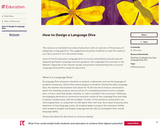
This resource is intended to provide all educators with an overview of the process of designing a Language Dive. The suggestions should be modified to meet the needs of your ELLs across K-12 in all content areas.
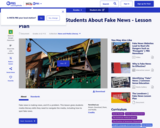
Fake news is making news, and it’s a problem. This lesson gives students media literacy skills they need to navigate the media, including how to spot fake news.
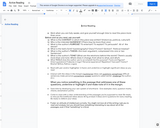
This handout explains how to enhance reading comprehension through interacting with text.
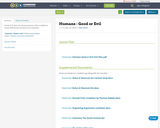
Grade 11-12 Unit, Are Humans Good or Evil, modified to match 10th Grade Common Core standards.
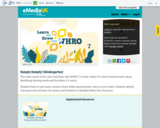
This video is part of the Learn and Grow with WHRO TV series. Watch Dr. Karen Drosinos teach about identifying rhyming words and the letters f, h, and q.
Students listen to and read a nursery rhyme while practicing their voice to print match. Students identify rhyming words and learn the names and formation of alphabet letters from the poem.
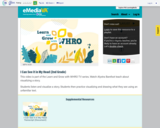
This video is part of the Learn and Grow with WHRO TV series. Watch Alystra Barefoot teach about visualizing a story.
Students listen and visualize a story. Students then practice visualizing and drawing what they see using an unfamiliar text.
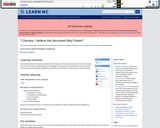
The learner will apply ideas of self-government as expressed in America's founding documents. The students will be able to isolate and analyze the main idea(s) in a historical document and re-write the main theme of the document in common grammatically correct language. This lesson plan was established for a block schedule and to meet the regular education English/History objectives for SLD students as well as other exceptional students.

An activity sheet with bibliographic information, an annotation, and ideas for extending the book with children. 2016 CLEL Bell Award Book for the early literacy practice, TALK.
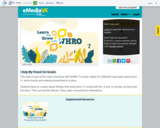
This video is part of the Learn and Grow with WHRO TV series. Watch Dr. Deborah Fuge teach about short /i/ word chunks and making connections in a story.
Students listen to a poem about friends, then build short /i/ words with the -it and -in chunks. As they hear the story, "The Lion and the Mouse," they make connections to themselves.

This video is part of the Learn and Grow with WHRO TV series. Watch Dr. Deborah Fuge teach about writing sentences on the topic of being brave.
Students hear a story of a brave little mouse in the retelling of "The Lion and the Mouse." They then complete a pre-writing activity on ways they can show bravery. In their learning journals, students practice writing a complete sentence about being brave.
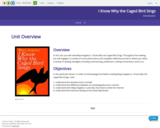
This lesson introduces Maya Angelou's I Know Why the Caged Bird Sings for Storm Lake High School's Diverse Literature course. It gives background on the author, setting, and the book itself as well as introducing students to the window-mirror concept in making connections with literature.
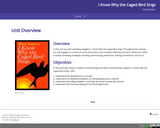
This lesson introduces Maya Angelou's I Know Why the Caged Bird Sings for Storm Lake High School's Diverse Literature course. It gives background on the author, setting, and the book itself as well as introducing students to the window-mirror concept in making connections with literature.
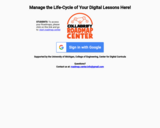
Kids learn about Pizza and Ice cream and compere the two in order to decide which is better? Opinion writing made fun and engaging. Can be adapted to second grade. Includes rubric, home activity, and extras.
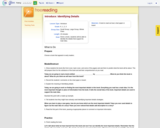
When given a book, students will be able to identify the main idea and the supporting details.